Pasta Frolla is an Italian pastry dough that serves as a pie crust in a variety of delicious recipes, and it’s an essential component in an array of traditional dishes. This pastry dough comes in two variations: sweet and savory.

Jump to:
The sweet version of this Italian sweet shortcrust pastry dough is a prime ingredient in delicacies like the beloved Italian Crostata, which can be filled with jam, fruits, or pastry cream.
While the savory version is the base for many savory tarts like torta salata and quiche.
Italian shortcrust tradition
This pastry is traditionally made using a simple recipe, employing a traditional method that respects the heritage of Italian pastry dough, yielding a result that is as tender as it is flavorful.
Its subtle sweetness and tender, crumbly texture makes it an ideal accompaniment to the myriad flavors of Italian recipes.
Perhaps one of the most iconic desserts featuring Pasta Frolla is the Crostata, a traditional Italian tart often filled with jam, fresh fruits, or sweet ricotta cheese.
Another classic is the Torta della Nonna, or "Grandmother's Tart," which encases a rich custard or pastry cream filling topped with pine nuts for an added crunch.
The Pastiera Napoletana, a typical Easter pie from Naples, also showcases the versatility of this sweet pastry dough.
Combining the crumbly Pasta Frolla with a filling of ricotta, boiled wheat, and flavored with orange blossom water, it exemplifies the ability of Italian desserts to celebrate local produce and customs.

The pasta frolla dough also exhibits its adaptability by serving as a base for numerous savory dishes.
The savory version omits sugar and baking powder, allowing it to complement a variety of savory ingredients.
One of the most celebrated dish is the Italian Easter Pie, or Pizza Rustica.
This hearty pie traditionally incorporates a variety of cheeses and cured meats; all encased within the crumbly, rich pasta frolla.
Another example is the Torta Salata or Pasticci, a savory tart filled with a multitude of fillings, from vegetables to cheeses and meats, showcasing the regional diversity of Italian cuisine.

Ingredients
Sweet version
For the sweet version of the pasta frolla you need the following ingredients:
Dry Ingredients:
- All-purpose Flour: The backbone of the dough, flour provides the necessary structure and texture. It absorbs the wet ingredients, creating the base of the dough.
- Sugar: An essential component of sweet Pasta Frolla, sugar adds sweetness while helping the dough achieve a golden-brown color during baking.
- Salt: Even in sweet recipes, salt is crucial. It enhances the flavors of the other ingredients and balances out the sweetness of the sugar.
- Baking Powder: This leavening agent helps the dough to rise slightly during baking, ensuring a tender, light texture in the final product.
Wet Ingredients:
- Whole Egg: Eggs contribute to the structure of the dough, add richness, and assist in achieving a beautiful golden color when baked.
- Cold Butter: Integral for a flaky and tender dough, cold butter creates pockets of steam during baking that helps to lift and lighten the texture. You can also use unsalted butter to allow more precise control over the dough's salt content.
Optional Flavors:
- Lemon Zest: Adding a fresh and tangy flavor, lemon zest can cut through the richness of the dough, providing a nice balance.
- Orange Zest: With its sweet and slightly bitter flavor, orange zest can add depth and complexity to the dough.
- Citrus Zest: Depending on the type of citrus used, citrus zest can add anything from a tangy punch to a sweet, floral note.
In Addition:
- Large Egg Yolks for Egg Wash: Egg wash gives the dough a glossy, golden finish when baked, enhancing its visual appeal. It is used with desserts with a double crust or lattice top
- Icing Sugar for Serving: A dusting of icing sugar just before serving adds an extra touch of sweetness and a professional finish.
See recipe card for measurements
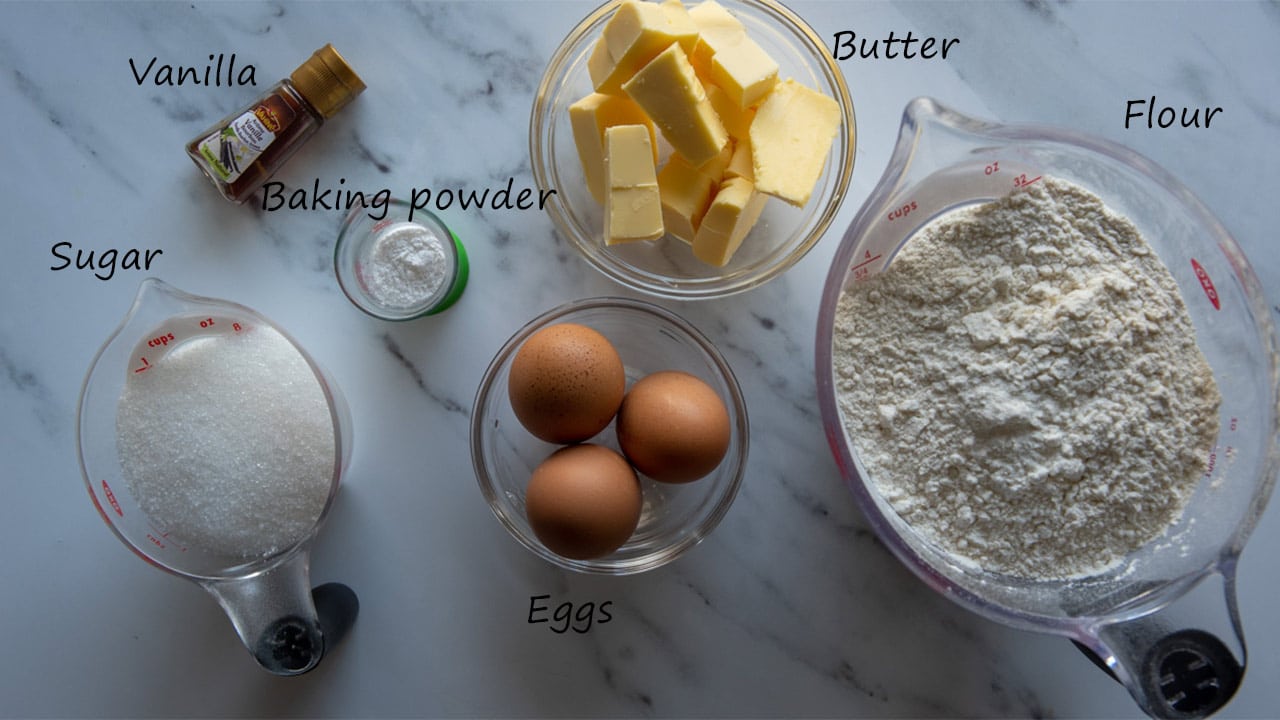
Savory version
Dry Ingredients:
- All-Purpose Flour: As the structure of your dough, flour gives its body and texture.
- Salt: Salt is essential in dough recipes, as it helps to enhance and bring out the flavors of the other ingredients.
Wet Ingredients:
- Whole Egg: Eggs not only add moisture to the dough but also help in binding the ingredients together. They contribute to the color and richness of the dough.
- Cold Water: The role of water is to bind the dry ingredients together to form a dough. Cold water helps ensure the butter doesn't melt prematurely, leading to a flakier crust.
- Cold Butter: Cold butter is the key to a tender, flaky Pasta Frolla. It creates pockets within the dough that turn into steam during baking, leading to a flaky texture. Alternatively, unsalted butter allows you to control the sodium content of your dough more precisely, which is especially important in a savory recipe where additional salty ingredients might be added later.
In Addition:
- Large Egg Yolks for Egg Wash: if you are making a double-crust pie, the egg wash gives your baked dough a golden, glossy finish, making your savory dishes look as appetizing as they taste.
See recipe card for measurements
The success of your savory Pasta Frolla relies on these key ingredients and your technique.
Remember, one of the secrets to creating a flaky and delicious crust is keeping your ingredients, particularly the butter and water, cold.
This helps keep the fat solid until it reaches the oven, creating the desired flaky texture.
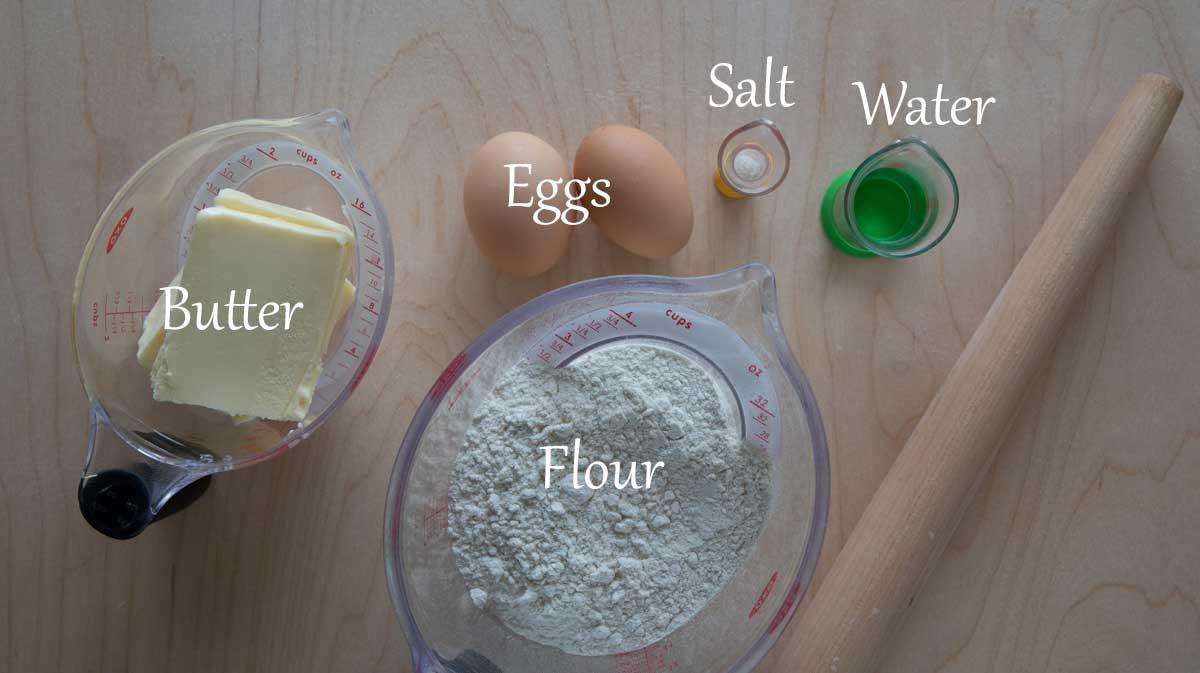
Instructions
Sweet pasta frolla
- Combine your flour, sugar, salt, and baking powder in a large bowl. Stir until everything is evenly distributed.
- If you wish, you can add some lemon, orange, or citrus zest for additional flavor.
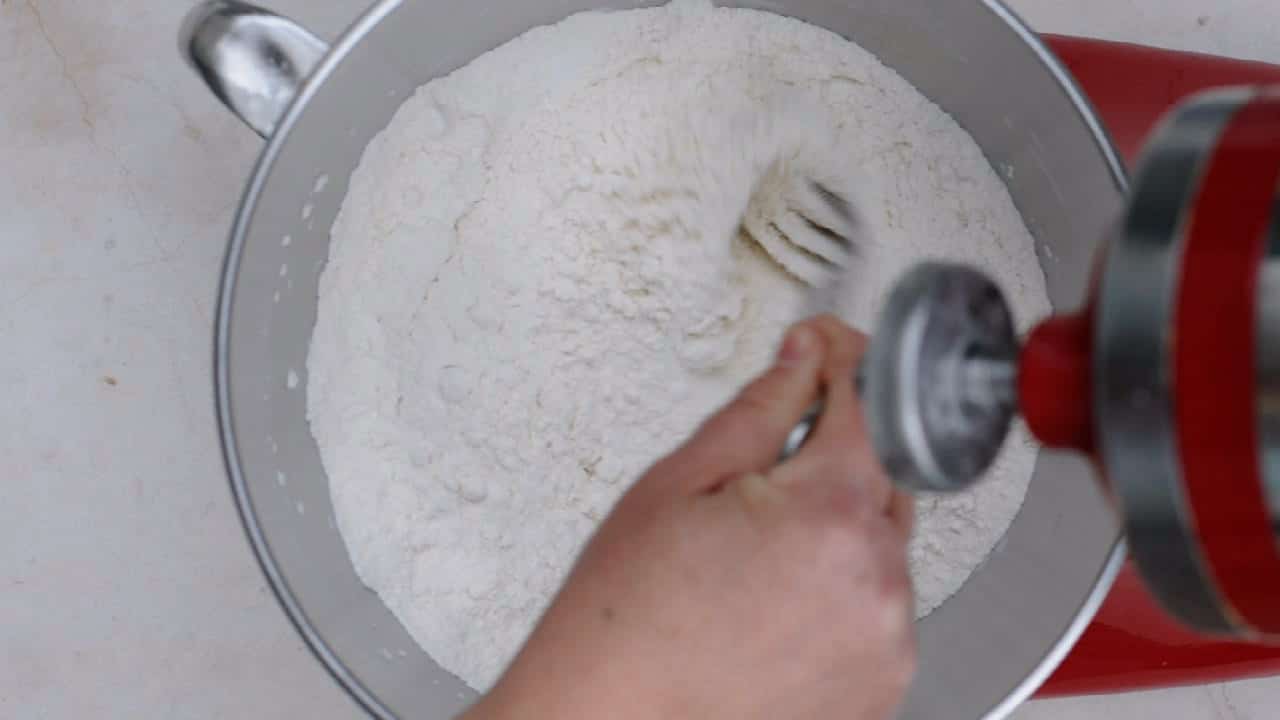
- Add the cold butter to your dry ingredients. You can use an electric mixer with a paddle attachment or a pastry cutter to mix the butter into the flour mixture until it resembles coarse crumbs.
- If you are using an electric mixer, add the egg and knead. If you are making it by hand, make a well in the center of the flour and butter mixture. Break the whole egg into the well. Stir with a fork until just combined.

- Knead the mixture gently with your hands just until a dough forms. Be careful not to overwork it, as this can make your dough tough.
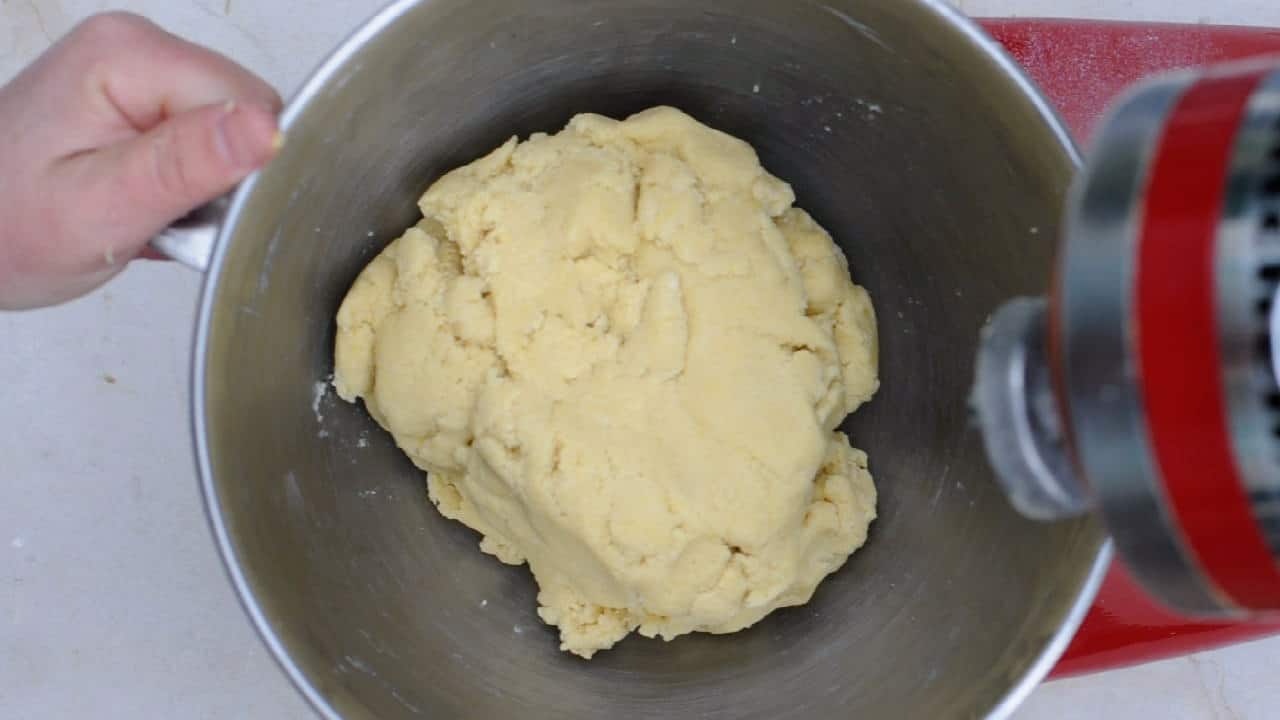
- Shape the dough into a disc and wrap it in plastic wrap. Refrigerate until hardened.

- After chilling, roll out the dough on a lightly floured surface to fit your tart or pie pan.

- Transfer the rolled-out dough to your pan, pressing it gently into the bottom and up the sides. Trim any excess dough and chill in the fridge for another 30 minutes before baking.
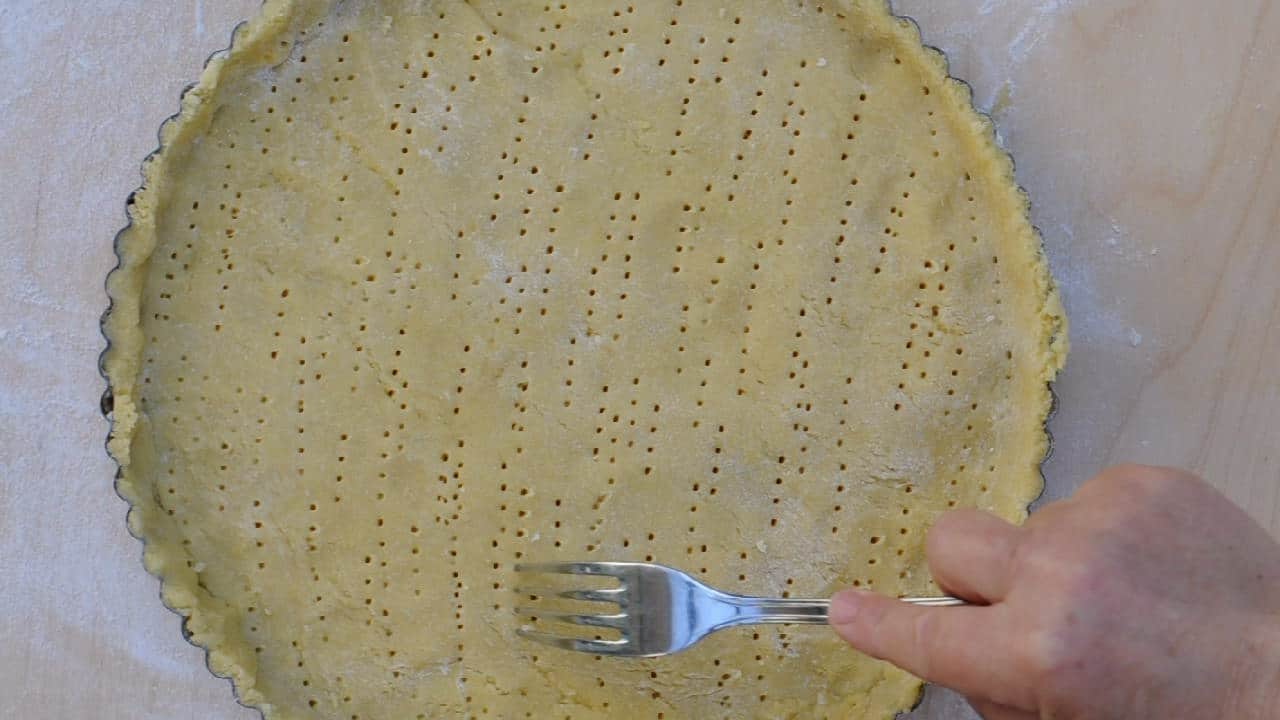
- Pre-bake the crust in a preheated oven if your recipe calls for it. For a fully baked crust, bake until golden brown. For a partially baked crust, bake just until it's set and no longer looks wet.
- Once the crust is ready, add your desired filling. Bake according to your specific recipe's instructions.
- Let your dessert cool completely before slicing and serving. If desired, garnish with a dusting of icing sugar

Savory pasta frolla
- Combine your flour and salt in a large mixing bowl, stirring until evenly mixed.
- If you're doing this manually, use a pastry cutter or your fingers to cut the cold butter into the flour until it resembles coarse crumbs. If you're using an electric mixer, use the paddle attachment on low speed to achieve the same result.
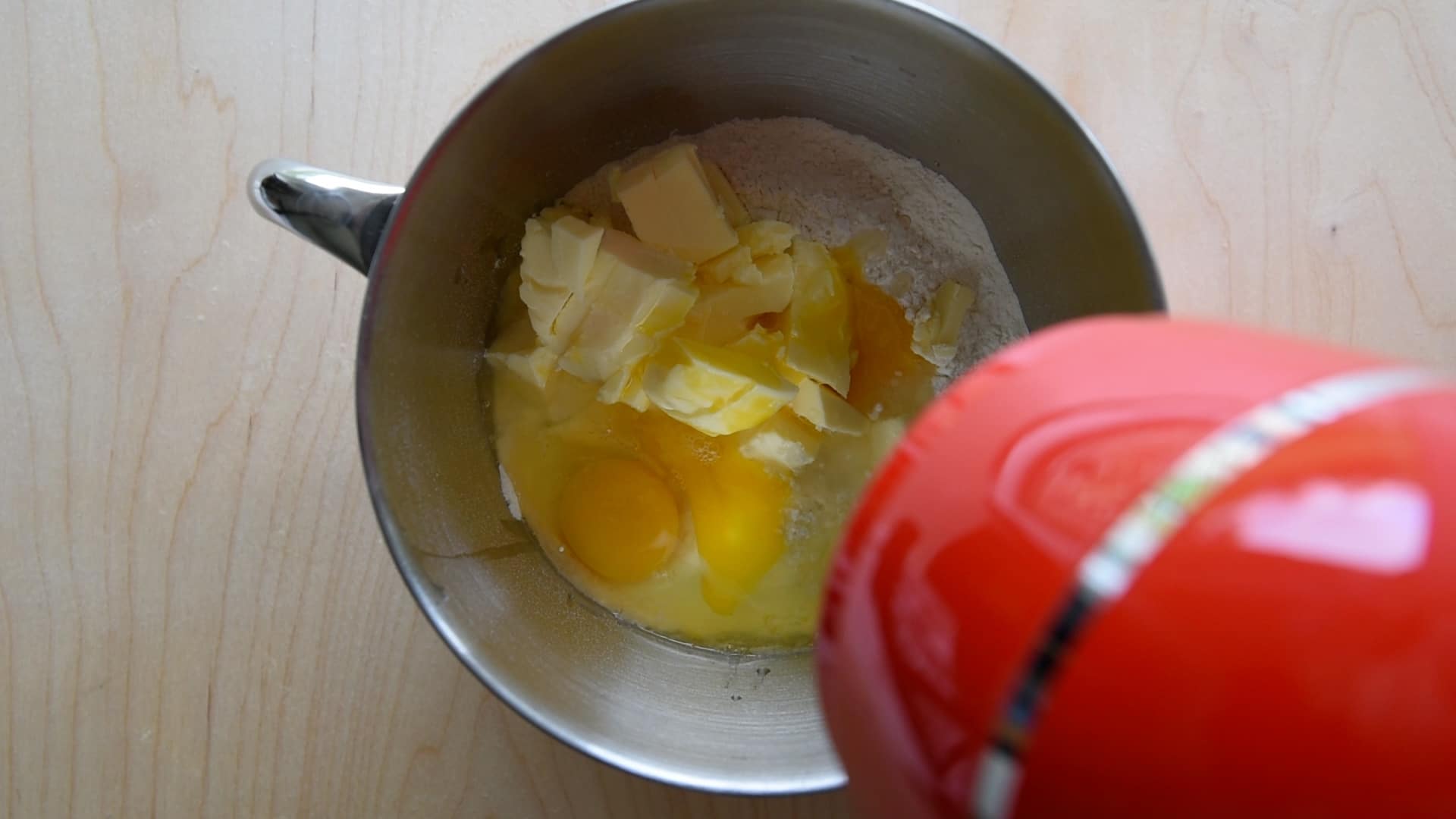
- Make a well in the center of your flour and butter mixture. Break the whole egg into the well and gently stir with a fork (or on a low speed with your mixer) until just combined.
- Gradually add cold water, a little at a time, mixing until the dough just starts to come together. Be cautious not to overmix, as this can result in tough dough.
- Knead the dough gently by hand until it forms a cohesive ball.

- Shape the dough into a disc, wrap it in plastic wrap, and refrigerate it for at least one hour or overnight if possible.
- After the dough has chilled, lightly flour your work surface and roll out the dough to fit your tart or pie pan.

- Carefully lift the dough and lay it in your pan, pressing it gently into the bottom and up the sides. Trim any excess dough and chill in the refrigerator for another 30 minutes before baking.

- Depending on your specific recipe, you might need to pre-bake your crust. To do this, bake in a preheated oven until the crust starts turning golden.
- Add your savory filling, then return to the oven to bake until the filling is cooked and the crust is golden.
- Allow your savory tart or pie to cool before slicing and serving. The flavors often deepen after a few hours, so consider making your dish in advance!
Like with sweet version, the key to a perfect savory crust is to avoid overworking the dough and keep your ingredients as cold as possible.
This ensures a tender, flaky crust that perfectly complements any savory filling.
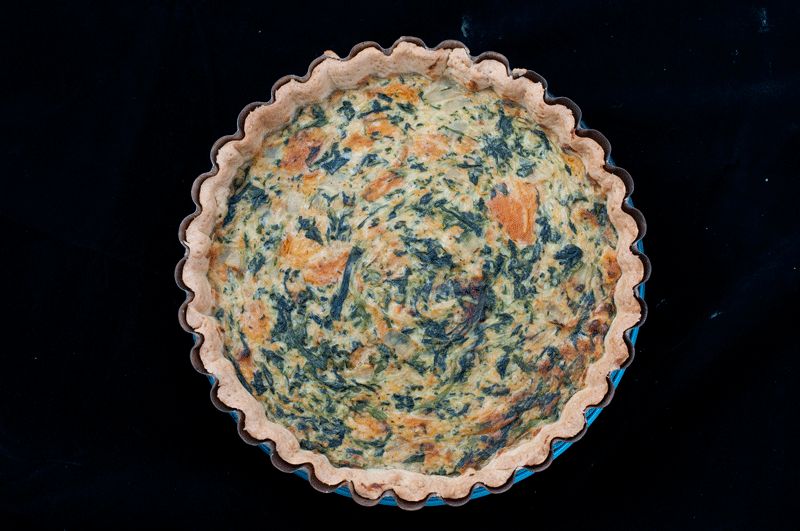
Tips and tricks
Here are the top tips to achieve the best results:
- Keep Ingredients Cold: This is essential to create a flaky crust. Cold butter helps create pockets in the dough that steam in the oven, resulting in a flaky texture.
- Don't Overwork the Dough: Overworking develops the gluten in the flour and can lead to a tough crust. When mixing and kneading, aim to do so just until the dough comes together.
- Rest the Dough: Resting the dough in the refrigerator allows the gluten to relax, making it easier to roll out and producing a more tender crust. It also helps to keep the dough cold.
- Roll Evenly: Aim for an even thickness when rolling out your dough. This ensures that it cooks evenly without any thin spots that could burn or thick spots that stay doughy.
- Use Enough Flour When Rolling: Using a bit of flour helps prevent the dough from sticking to your work surface or rolling pin, but don't use too much or your dough could become tough.
- Add Water Sparingly: Too much water can make the dough tough. Add just enough cold water to bring the dough together.
- Check Your Oven Temperature: Ovens can run hot or cold; the correct temperature is crucial for the best crust. Consider using an oven thermometer to ensure your oven is at the right temperature.
- Blind Bake If Needed: If your filling is very wet or cooks faster than your crust, you might need to pre-bake or "blind bake" your crust. This prevents a soggy bottom.
- Use Pie Weights for Blind Baking: When blind baking, use pie weights or dried beans over a piece of parchment paper to prevent the dough from puffing up in the oven.
- Chill Before Baking: Put the dough back in the refrigerator for a few minutes after it's in the pan and before it goes into the oven. This helps keep the butter cold, which creates a flakier crust.
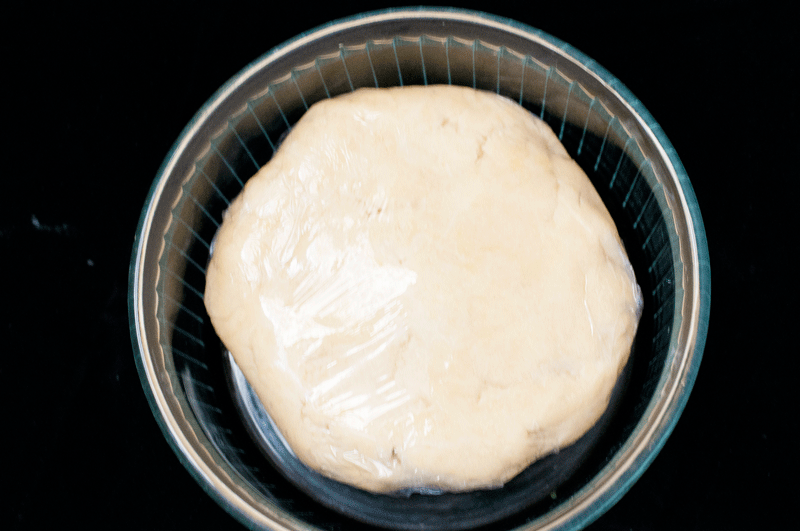
Sweet filling ideas
Here are some sweet filling suggestions that would perfectly complement the sweet Pasta Frolla:
- Fruit Preserves or Jam: A classic filling for Italian crostatas, you can use your favorite type of fruit preserves or jam. Raspberry, strawberry, apricot, or blackberry are all delicious choices.
- Lemon Curd: The tartness of lemon curd provides a lovely contrast to the sweet pastry. Top with some fresh berries for an additional layer of flavor.
- Pastry Cream and Fresh Fruit: Fill your tart shell with a rich vanilla pastry cream and top it with an assortment of fresh fruit for a colorful and delicious tart.
- Ricotta and Citrus Zest: A traditional filling for Italian Easter Pie, combine ricotta cheese with sugar and a mix of lemon and orange zest for a fresh and creamy filling.
- Chocolate Ganache: A rich and creamy chocolate ganache filling would be perfect for chocolate lovers. You can even add a sprinkle of sea salt on top to enhance the flavor.
- Caramel and Apple: Fill your tart shell with thinly sliced apples and drizzle with a generous amount of caramel sauce or honey for a decadent dessert.
- Frangipane and Berries: A creamy almond frangipane makes a delicious filling, especially when topped with fresh or frozen berries.
- Nutella: Fill your sweet pasta frolla with this beloved Italian hazelnut chocolate spread for a simple yet delightful treat.
- Cherry Compote: A sweet and slightly tart cherry compote would complement the sweet crust beautifully. Top with a whipped cream dollop or vanilla ice cream scoop.
- Pumpkin or Sweet Potato Pie Filling: For a seasonal treat, fill your tart shell with a spiced pumpkin or sweet potato pie filling.
Each of these sweet fillings would pair beautifully with a sweet Pasta Frolla, creating a dessert that's sure to impress.
Whichever filling you choose, be sure to allow your tart or pie to fully cool before cutting into it to ensure it keeps its shape.
Enjoy experimenting with these suggestions and finding your favorite combinations!

Savory filling ideas
Here are some savory filling suggestions that would complement the savory Pasta Frolla beautifully:
- Quiche Filling: A classic egg, cream, and cheese base can be customized with a variety of additions. Consider options like spinach and feta, ham and Swiss cheese, or caramelized onion and goat cheese.
- Mushroom and Gruyère: A rich and earthy combination with sautéed mushrooms and melted Gruyère cheese. Consider adding fresh herbs such as thyme or rosemary for extra flavor.
- Spinach and Ricotta: A classic Italian combination, spinach, and ricotta pair beautifully in a tart. Add some grated nutmeg for an extra flavor boost.
- Tomato and Mozzarella: A twist on the classic Italian Caprese salad, with fresh or oven-roasted tomatoes, mozzarella cheese, and fresh basil.
- Ratatouille: A traditional French dish consisting of eggplant, zucchini, bell peppers, and tomatoes, slowly stewed with herbs. This would make a flavorful and colorful tart filling.
- Prosciutto and Fig: Salty prosciutto pairs beautifully with sweet figs. Add a bit of creamy goat cheese and fresh arugula for a well-rounded flavor profile.
- Butternut Squash and Blue Cheese: Roast cubes of butternut squash until tender and slightly caramelized, then pair with blue cheese's strong, tangy flavor. Add some fresh sage for an aromatic touch.
- Leek and Parmesan: Softly cooked leeks with a sprinkling of Parmesan cheese makes for a simple, yet flavor-packed filling.
- Roasted Mediterranean Vegetables: Combine roasted eggplant, zucchini, bell peppers, and tomatoes for a vibrant, veggie-packed filling.
- Smoked Salmon and Dill: A creamy base (perhaps cream cheese or crème fraîche) topped with smoked salmon and fresh dill makes for a luxurious and flavorful tart.
For more complex double-crust pie recipes, you can check beef pie, chicken pie, Heidi pie.
Although this savory pastry can also be used to make sweet dishes.
You can use it as a base for a less sweet crostata or fruit tart.
For example, I use this pastry to make the famous French dessert Tarte Tatin.
Each of these fillings brings its own unique flavors to the table, making your savory Pasta Frolla the star of any meal.
Whichever filling you choose, be sure to fully cool your tart or pie before cutting into it to ensure it keeps its shape.
Enjoy experimenting with these suggestions and finding your favorite combinations!
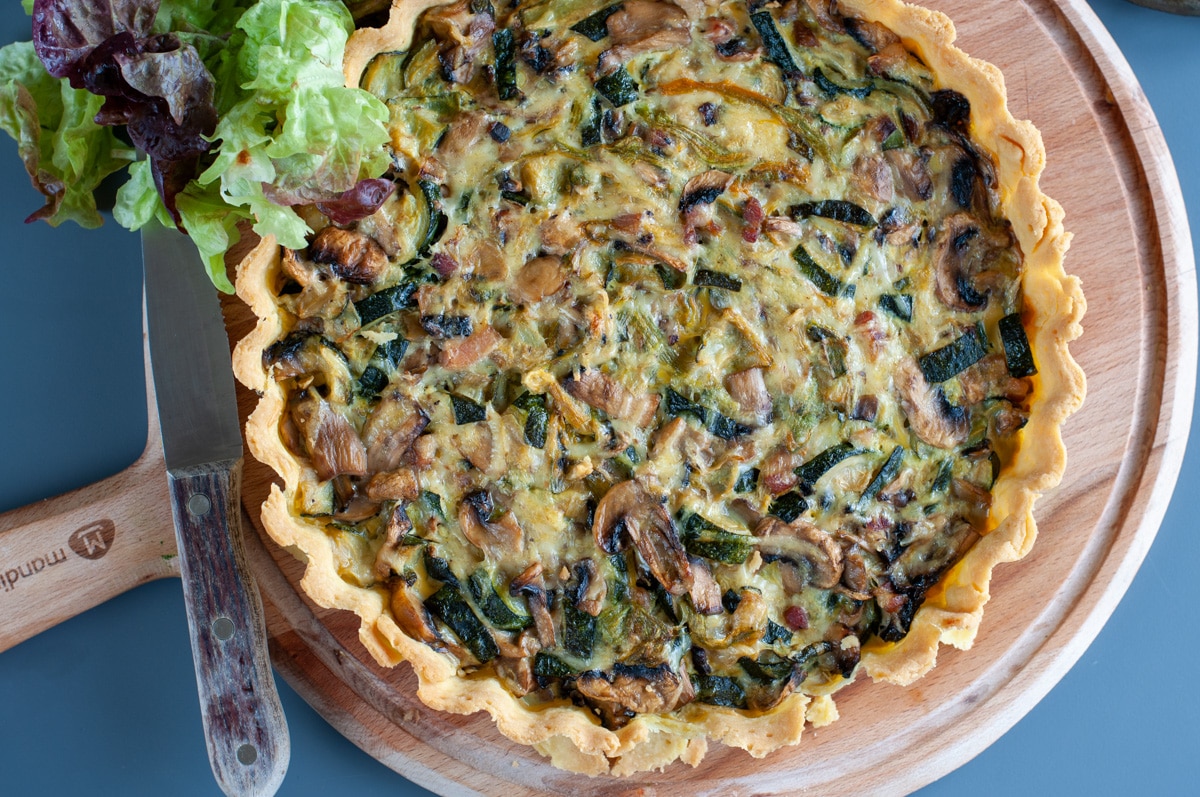
How to store it
To store your dough, follow these directions:
- Refrigerating: It's best to use the dough immediately after preparing it. However, if you need to store it, wrap the dough tightly in plastic wrap and refrigerate. It can be kept in the refrigerator for up to 3 days. Although the baking powder in the sweet dough will reduce its raising power.
- Freezing: For longer storage, the dough can be frozen. Again, wrap it tightly in plastic wrap, then place it in a freezer-safe bag or container. Frozen Pasta Frolla dough can last up to 3 months. To use, thaw it in the refrigerator overnight.
- Storing After Baking: Allow the shell to cool completely if your recipe calls for a pre-baked shell. It can be stored at room temperature, and covered with a clean kitchen towel, for a day or two before filling. If you need to store it longer, cover it in plastic wrap and refrigerate.

Using Leftover
When you trim the excess dough from the side, you may have plenty of leftover dough.
Here are some ideas on how to use it:
- Mini Tarts or Tartlets: Roll out the leftover dough and use it to line mini tart pans. Fill with your choice of sweet or savory fillings and bake until golden brown.
- Cookies: Roll out the dough, cut into shapes with cookie cutters, and bake until lightly golden. You can sprinkle with sugar before baking for a sweet treat or use them as a base for sandwich cookies.
- Pie Crust Decorations: If you're making a pie, use the leftover dough to create decorative accents for the top of the pie. Cut out shapes or create a lattice pattern.
- Twists: Roll out the dough and cut into strips. Twist the strips and sprinkle with sugar or grated cheese (for a savory twist), then bake until golden.
- Crackers: Roll the dough thin and cut into squares or rectangles. Prick with a fork and bake until crispy. These can be sweet (sprinkled with cinnamon sugar) or savory (sprinkled with cheese or herbs).
- Fruit Galette: If you have enough dough left, consider making a rustic galette. Roll out the dough, place some fruit in the center, and fold the edges over the fruit. Bake until the crust is golden and the fruit is bubbly.
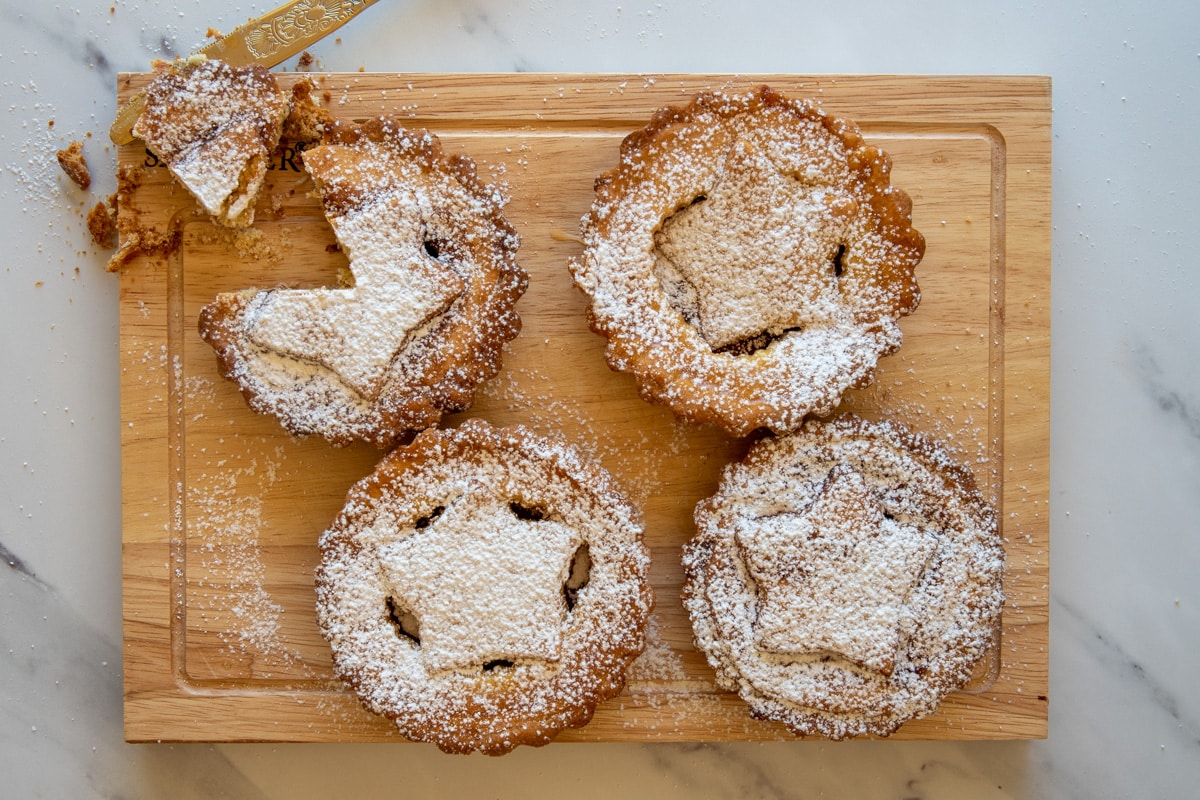
Recipes I make with it
I use this pastry for many recipes, and here is the list:
- Beef Pie With Marsala Sauce And Mushrooms
- Chicken and Mushroom Pie Recipe
- Chelsea Market Heidi Pie With French Chevre
- Zucchini Mushroom Quiche Recipe
- Caramelized Squash Spinach Bacon Quiche
For desserts:
- Peach Tarte Tatin with Calvados and Pistachios
- Pastiera Napolitana Ricotta Pie
- Crostata with Homemade Peach Jam
If you are using these sweet and savory pasta frolla to make a recipe, leave your comment below I would like to hear from you. You can find more delicious ideas if you FOLLOW ME on Facebook, YouTube, or sign up to my newsletter.
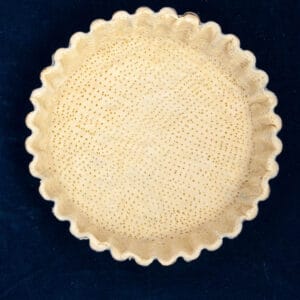
📋 Savory And Sweet Pasta Frolla - Italian Pastry Dough
Ingredients
Sweet pasta frolla (double for top crust)
- ⅓ cup butter at room temperature
- ½ cup sugar
- 2 cup flour
- 2 fresh eggs
- 2 tablespoon baking powder
- 1 pinch salt
Savory pasta frolla (double for top crust)
- ½ cup butter at room temperature
- 1 ½ cup flour
- 1 fresh eggs
- 2 tablespoon fresh water
- 1 pinch salt
Equipment
Instructions
Sweet version
- Combine your flour, sugar, salt, and baking powder in a large bowl. Stir until everything is evenly distributed.½ cup sugar, 2 cup flour, 2 tablespoon baking powder, 1 pinch salt
- If you wish, you can add some lemon, orange, or citrus zest for additional flavor.
- Add the cold butter to your dry ingredients. You can use an electric mixer with a paddle attachment or a pastry cutter to mix the butter into the flour mixture until it resembles coarse crumbs.⅓ cup butter at room temperature
- If you are using an electric mixer, add the egg and knead. If you are making it by hand, make a well in the center of the flour and butter mixture. Break the whole egg into the well. Stir with a fork until just combined.2 fresh eggs
- Knead the mixture gently with your hands just until a dough forms. Be careful not to overwork it, as this can make your dough tough.
- Shape the dough into a disc and wrap it in plastic wrap. Refrigerate until hardened.
- After chilling, roll out the dough on a lightly floured surface to fit your tart or pie pan.
- Transfer the rolled-out dough to your pan, pressing it gently into the bottom and up the sides. Trim any excess dough and chill in the fridge for another 30 minutes before baking.
- Pre-bake the crust in a preheated oven if your recipe calls for it. For a fully baked crust, bake until golden brown. For a partially baked crust, bake just until it's set and no longer looks wet.
- Once the crust is ready, add your desired filling. Bake according to your specific recipe's instructions.
- Let your dessert cool completely before slicing and serving. If desired, garnish with a dusting of icing sugar
Savory version
- Combine your flour and salt in a large mixing bowl, stirring until evenly mixed.1 ½ cup flour, 1 pinch salt
- If you're doing this manually, use a pastry cutter or your fingers to cut the cold butter into the flour until it resembles coarse crumbs. If you're using an electric mixer, use the paddle attachment on low speed to achieve the same result.½ cup butter
- Make a well in the center of your flour and butter mixture. Break the whole egg into the well and gently stir with a fork (or on a low speed with your mixer) until just combined.1 fresh eggs
- Gradually add cold water, a little at a time, mixing until the dough just starts to come together. Be cautious not to overmix, as this can result in tough dough.2 tablespoon fresh water
- Knead the dough gently by hand until it forms a cohesive ball.
- Shape the dough into a disc, wrap it in plastic wrap, and refrigerate it for at least one hour or overnight if possible.
- After the dough has chilled, lightly flour your work surface and roll out the dough to fit your tart or pie pan.
- Carefully lift the dough and lay it in your pan, pressing it gently into the bottom and up the sides. Trim any excess dough and chill in the refrigerator for another 30 minutes before baking.
- Depending on your specific recipe, you might need to pre-bake your crust. To do this, bake in a preheated oven until the crust starts turning golden.
- Add your savory filling, then return to the oven to bake until the filling is cooked and the crust is golden.
- Allow your savory tart or pie to cool before slicing and serving. The flavors often deepen after a few hours, so consider making your dish in advance!
Notes
- Keep Ingredients Cold: This is essential to create a flaky crust. Cold butter helps create pockets in the dough that steam in the oven, resulting in a flaky texture.
- Don't Overwork the Dough: Overworking develops the gluten in the flour and can lead to a tough crust. When mixing and kneading, aim to do so just until the dough comes together.
- Rest the Dough: Resting the dough in the refrigerator allows the gluten to relax, making it easier to roll out and producing a more tender crust. It also helps to keep the dough cold.
- Roll Evenly: Aim for an even thickness when rolling out your dough. This ensures that it cooks evenly without any thin spots that could burn or thick spots that stay doughy.
- Use Enough Flour When Rolling: Using a bit of flour helps prevent the dough from sticking to your work surface or rolling pin, but don't use too much or your dough could become tough.
- Add Water Sparingly: Too much water can make the dough tough. Add just enough cold water to bring the dough together.
- Check Your Oven Temperature: Ovens can run hot or cold; the correct temperature is crucial for the best crust. Consider using an oven thermometer to ensure your oven is at the right temperature.
- Blind Bake If Needed: If your filling is very wet or cooks faster than your crust, you might need to pre-bake or "blind bake" your crust. This prevents a soggy bottom.
- Use Pie Weights for Blind Baking: When blind baking, use pie weights or dried beans over a piece of parchment paper to prevent the dough from puffing up in the oven.
- Chill Before Baking: Put the dough back in the refrigerator for a few minutes after it's in the pan and before it goes into the oven. This helps keep the butter cold, which creates a flakier crust.
Nutrition
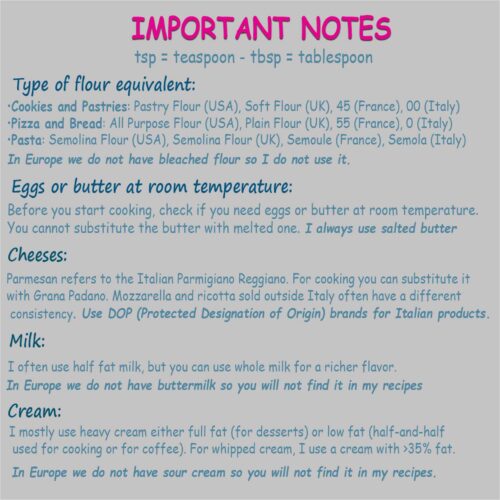

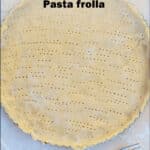
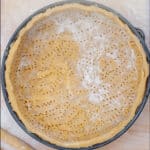
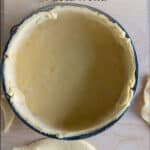
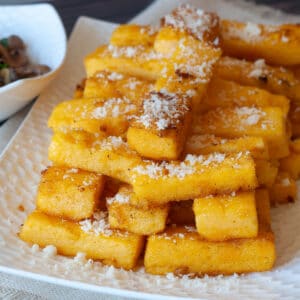
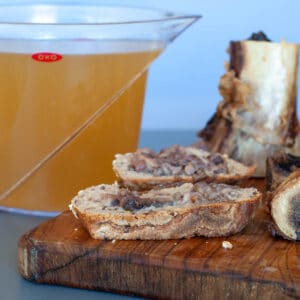


Patty @pattysaveurs.com
I'm not that great at making crusts and always on the lookout for one that will work for me, will try yours!
Laura
Let me know how it goes. This one works well for me every time
Elaine @ Dishes Delish
I'm looking forward to making your crust. Christopher is the crust maker in this house but it would be nice to try it myself. 🙂
Laura
Christopher does not stop surprising me!